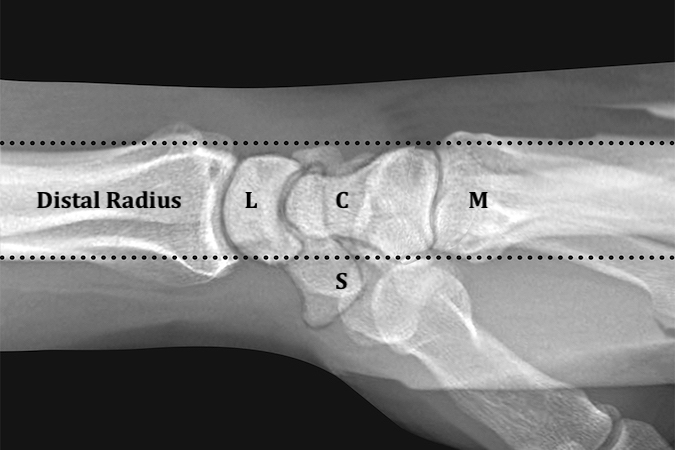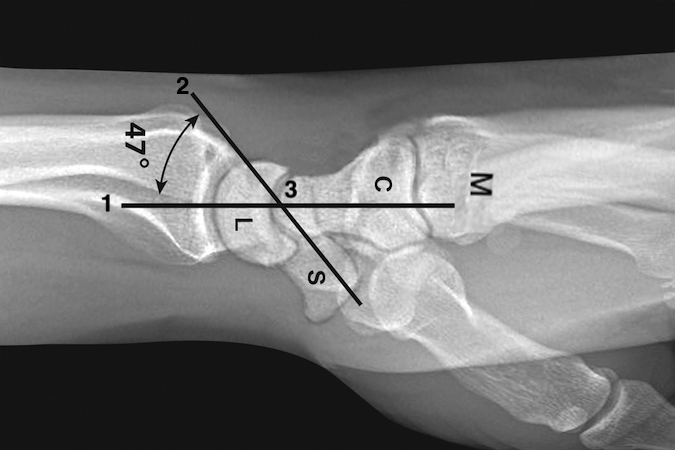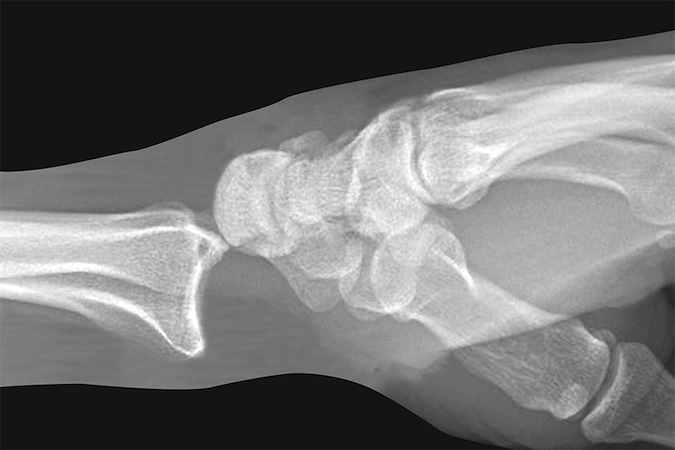Carpal diagrams, Normal X-rays and Alignment
-

Normal distal radius(R), capitate C), lunate(L), scaphoid(S) and metacarpals(M) alignment on “true” lateral x-ray of the wrist. A “true” lateral x-ray of the wrist must be taken in neutral forearm rotation and neutral wrist deviation.
-

On a normal neutral rotation lateral, the horizontal axis of the radius, lunate, capitate, and metacarpals is a straight line (1). A line (2) the longitudinal axis of the scaphoid crosses line (1) at point (3). The average normal angle between these lines is 47° (range 30-60°). Angles outside this range suggest carpal instability (DISI >60°; VISI <30°).
-

Gilula’s lines (ref 2) superimposed on a neutral deviation PA wrist x-ray. Arc 1 is a smooth arcing line paralleling the proximal articular surfaces of the triquetrum, lunate, and scaphoid. Arc 2 parallels the distal concave surfaces of the triquetrum, lunate, and scaphoid. Arc 3 parallels the smooth curved surface of the proximal hamate and capitate. When these smooth curved lines are irregular, disrupted, or step off it is indicative of a carpal instability or dislocation.
-

Diagrammatic lateral x-ray of a dorsal radiocarpal dislocation. R-radius; L-lunate; C-capitate; Entire carpus is displaced dorsally.
